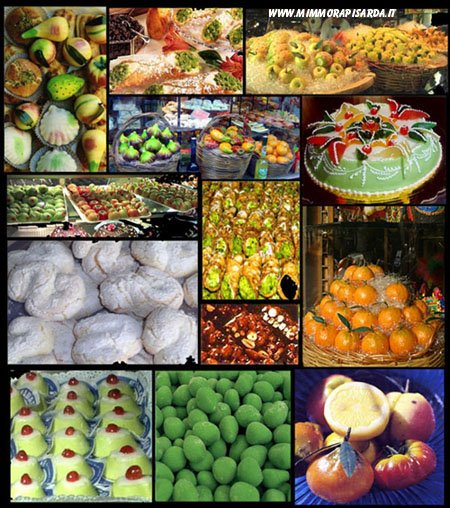 Source: The New York Times - Travel
Source: The New York Times - TravelThese new chefs are also bridging the gap between peasant cooking and that of the monzù, the French-trained chefs the aristocracy employed in the 19th and early 20th centuries. Monzù is Sicilian for monsieur.
There are at least a half a dozen places like Il Mulinazzo where the food reflects this innovative cuisine. When I visited Sicily at the beginning of the year, we made it to only four, whetting my appetite to someday go back and try the rest.
I found chefs who are putting together foie gras with pine nuts and basil sauce, and raw chopped tuna with olive oil flavored with green oranges.
The menu at Il Mulinazzo has many French touches: Mr. Graziano worked for several years in France. But the dishes highlighted on the menu are taken from the Sicilian tradition, like purée of fava beans enriched with scampi, ricotta and extra virgin olive oil. The earthiness of the beans and the sweet creaminess of the ricotta play off the ocean flavors of the scampi.
At Il Timo, the restaurant in the Sheraton hotel in Catania, Saverio Piazza, the executive chef and food and beverage director, has created what he calls fish gnocchi, borrowing from haute cuisine and recalling a quenelle or mousse of fish paste poached in a broth. His featherlike gnocchi are made with butter, flour, butter and sea bass. They are served in a sauce of scampi, tomatoes and garlic.
Mr. Piazza says outside influences, including Japan, have increased the popularity of raw fish in Sicily, where restaurants in coastal towns serve it just hours old. "The traditional way was fried tuna with onion sauce with vinegar, a type of sweet and sour," he said. "The first raw fish to be served were the neo nato, newly born anchovies or sardines. Little by little we got to swordfish carpaccio. Now there is prosciutto of tuna."
Mr. Piazza loves to play with uncommon combinations of spices and vegetables, often using them as a base for simply grilled or sautéed fish. He infuses eggplant with cinnamon and serves it with sea bass; red mullet rests on a bed of zucchini sautéed with cardamom. "I close myself in the office, and I imagine the taste," he said.
One of these sessions produced eggplant marmalade made with sugar and bay leaf and served in a tart shell topped with a lemon twist.
Ciccio Sultano, whose Ristorante Duomo has a Michelin star, was one of the first local chefs to be noticed abroad for his reinvention of Sicilian dishes and for returning lost ingredients to contemporary cooking.
Always playful, he serves shrimp and squid fried in a delicate batter of semolina. It comes to the table wrapped in a paper cone, like French fries.
"I like people to be entertained, to have fun," Mr. Sultano said. "My work is to rediscover and identify the lost flavors of traditional cuisine and to renew them, inserting them into a modern and innovative context, while at the same time remaining true to the historical significance of the territory."
His dish of octopus, pork and citron seems unlikely until you taste it. The octopus is boiled and ground "like a salami," he said. The pork is prepared like headcheese, but with orange and lemon, giving both the seafood and the meat similar textures. The accompanying salad of citron, onions and parsley contrasts with and lightens the richness of the octopus and pork.
But the most daring experimenter with the strong sweet and savory elements in Sicilian cooking is Mr. Assenza of Caffè Sicilia.
As we sat in his wonderful old cafe, housed in a 1749 building, he plied us with example after example of his startling honeys and jams, cakes and preserves. "Using a combination of ingredients," he said, "you pass from low use of sugar to high use at the end of a meal."
For example he marinates raw fish in honey suffused with extra virgin olive oil and orange, lemon and saffron, and then serves it with lemon granita. And he pairs oysters with almond granita and what Mr. Assenza calls chili pepper candy, hot peppers glazed with honey.
The combinations are fascinating and endless, and at times they seem improbable. But one bite changes all that, astounding and delighting the palate.
One of Mr. Assenza's gems is a basil marzipan filling for chocolate. The brilliant creations of his mad genius - dozens of marvelous little boxes filled with jars containing honey-glazed capers; honey combined with wild fennel, saffron, white pepper or bergamot - line the shelves behind the glass counters of the cafe.
"This is my link with the Sicilian tradition of sweet and acid," he said. "We have the best ingredients and we honor Sicily by amplifying the quality of the ingredients."
Brian Wingfield contributed reporting for this article.







No comments:
Post a Comment